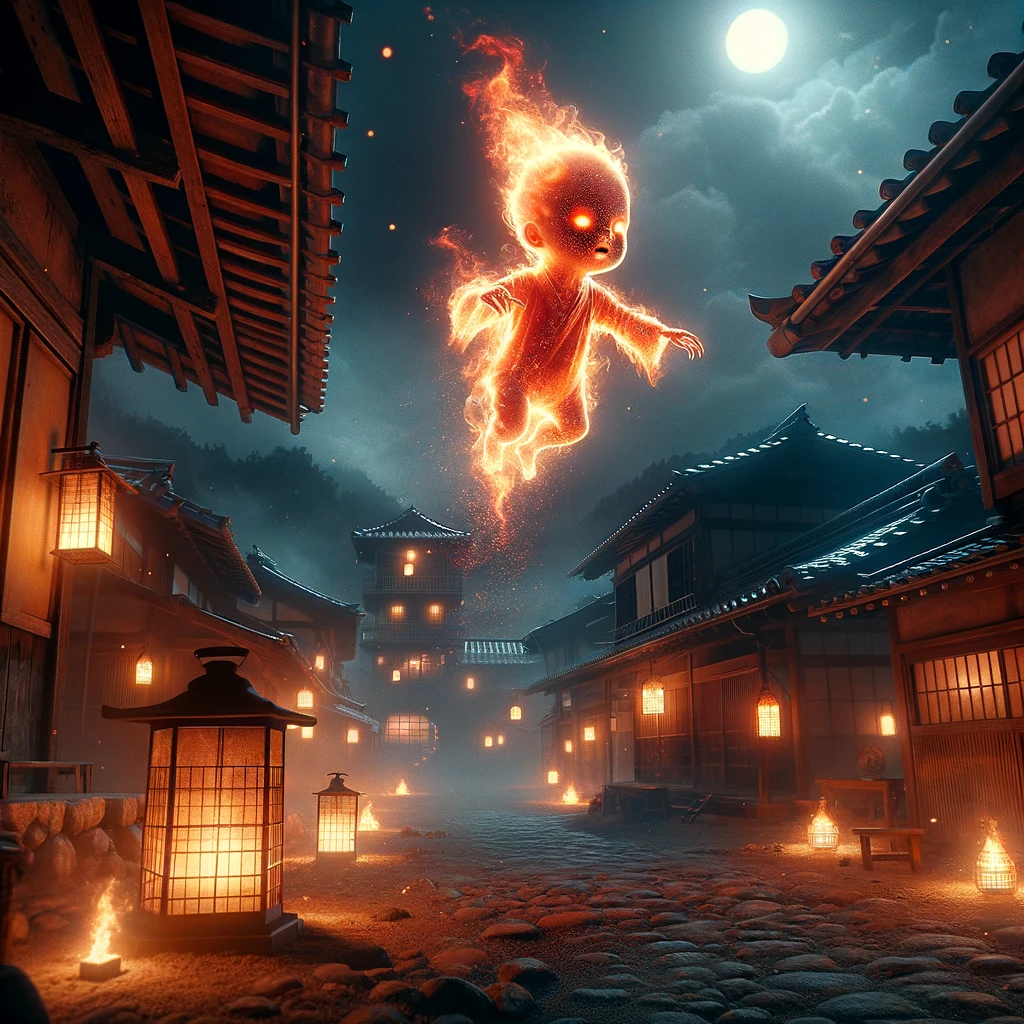In the rich tapestry of Japanese folklore, filled with an array of spirits and creatures, the Abura Akago occupies a unique and haunting niche. This spectral entity, often depicted as a flaming infant floating through the night, embodies the complex interplay between the mundane and the supernatural that characterizes much of Japan’s traditional mythos.
Origins of the Abura Akago
The legend of the Abura Akago, translating to “oil baby” in English, originates from the Omi Province, now part of modern-day Shiga Prefecture. The tales describe it as a malevolent spirit, an infant ghost that appears engulfed in flames, floating eerily in the night. According to folklore, the Abura Akago would enter homes by passing through their bamboo blinds, drawn to the oil in andon lamps, which it would then drink before vanishing as mysteriously as it appeared.
The Abura Akago’s legend is deeply rooted in the Edo period, a time when oil, particularly from rapeseed, was a valuable commodity for lighting homes. The imagery of an entity stealing oil not only invoked fear but also served as a cautionary tale about the dangers of wasting precious resources. This narrative, like many folk tales, reflected societal values and concerns, embedding a moral lesson within a supernatural framework.
Descriptions and Attributes
The Abura Akago is typically described as a small, infant-like creature surrounded by or composed of fire. Its ability to float and its predilection for oil draw upon common themes in Japanese folklore of yokai (supernatural monsters) and yurei (ghosts) interacting with the physical world in inexplicable ways. Unlike some spirits that might have a more direct interaction with humans, the Abura Akago is more of a voyeur, a spectral presence that leaves behind a sense of unease and mystery.
The Most Notable Sighting
The most notable sighting of the Abura Akago, which has significantly contributed to its legend, is steeped in the atmosphere of ancient Japan, specifically within the Omi Province. According to folklore, villagers in this area reported witnessing a mysterious and unsettling phenomenon: a fireball that would glide through the night, its purpose and origin unknown. This fireball, however, was no mere flicker of flame or trick of the light. As it approached the traditional oil lamps (andon) that lit the homes and streets, it would transform, taking on the shape and sound of a laughing infant engulfed in flames.

This spectral infant, the Abura Akago, was said to hover near the oil lamps, its laughter chilling to those who heard it. Then, with an almost curious intent, it would dip its head into the lamp, drinking the oil, before disappearing as swiftly and mysteriously as it had arrived. The villagers were left with nothing but an eerie silence and the lingering fear of its return.
Such sightings were not merely tales of terror; they were imbued with the cultural anxieties of the time. Oil was a valuable resource, and the image of it being consumed by a ghostly infant invoked not only fear of the supernatural but also of scarcity and loss. This account, recorded and popularized in the West by Lafcadio Hearn, has become the most enduring image of the Abura Akago, transforming it from a local legend to a figure known to aficionados of folklore worldwide.

The Abura Akago is a fascinating example of how folklore can serve multiple purposes: instilling caution, entertaining listeners, and expressing societal anxieties. Its story, while unique, shares common themes with other global legends of spectral entities and haunted nights. As we delve into the tales of the Abura Akago, we are reminded of the enduring power of folklore to capture the human imagination, to teach, and to terrify, keeping the flame of tradition alive across generations.


















